

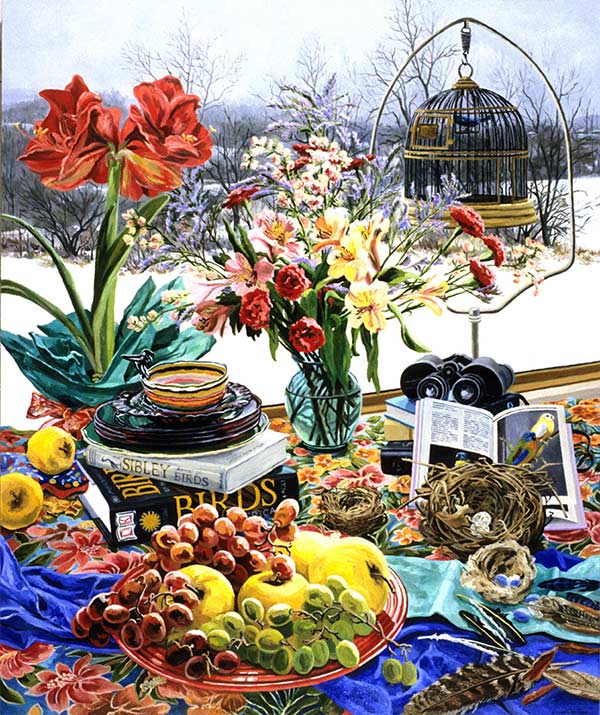 Hendryx Birdcage, oil on canvas
Hendryx Birdcage, oil on canvas
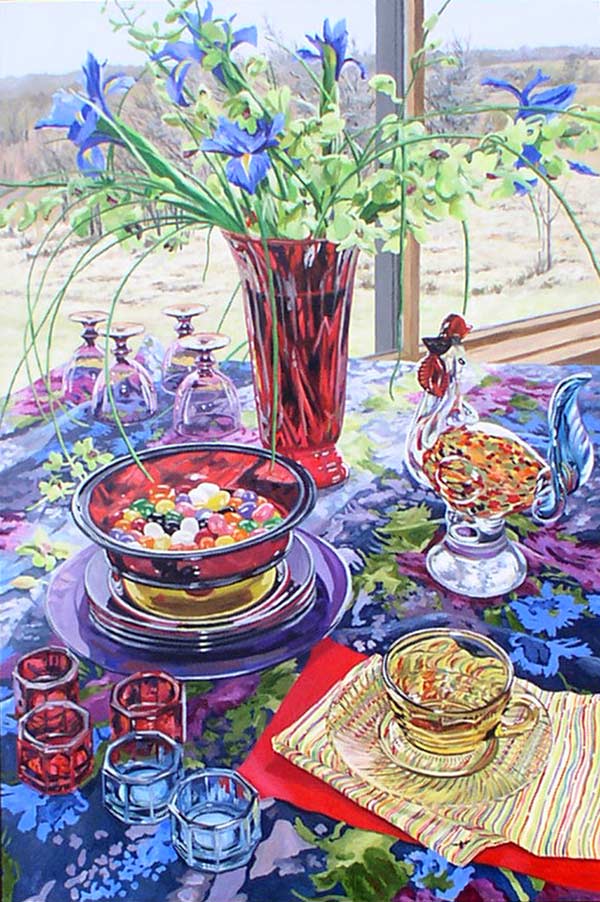 Sean's Orchids, oil on canvas
Sean's Orchids, oil on canvas
A painting by Kate Timm may appear at first a juxtaposition of two traditional genre, landscape and still life, with one providing a sensual counterpoint to the other. But the artist rarely lets us rest content with such an interpretation. Although the paintings contrast two artistic genre, Ms. Timm forces us to regard them as a single composition. The colors of the background landscape are carefully woven through the foreground still life so that our eyes are always kept moving among the various hues and color harmonies. Some of her compositions seem at times treatises on the tonal variations of one or two dominate hues. The overall effect is that we are never allowed to mentally dissociate foreground and background.
The artist also uses several devices to deny our natural tendency to segregate background landscape and foreground still life. A progressive definition of the image, from loosely brushed landscape to an almost photo-realistic treatment of the foreground objects requires that we regard foreground and background as a single perspective of diminishing focus. Although, too, the still life is superimposed upon the landscape, the artist leaves considerable ambiguity regarding the line of demarcation and, at times, deliberately blurs the boundary between the two. In Cakes, Candies, Snow, for example, we are given no reference to a window frame, and the white of the snow outside continues forward into the white of the napkins, blurring the distinction between inside and outside.
This blurring of the demarcation between inside and outside – between landscape and still life – is important because Timm’s paintings establish not so much a contrast between the two genre as a progression through them. It is a progression through different kinds of artiface or through various stages of representation. In Blue Plate Special, for example, the background shows us a rich summer landscape with wildflowers blooming in a natural hedgerow. As we move into the foreground, the flowers and fruits have become artfully arranged in bowls and vases on a table. And the object closest in our view, the table cloth upon which the still life rests, presents us a stylized, graphic representation of these “fruits” of summer.
This is a progression we observe in virtually all of Timm’s paintings. (In one, the movement is given humorous point in an arrangement of natural peanuts resting on the comic strip “peanuts.”) The relationship of landscape to still life in her work is, at base, a movement from natural fact through various stages of human artifact. In her more complex works, the still life contains not only visual but symbolic ‘representations’: binoculers and an empty cage in a painting about birds or upturned glasses and an extinguished candle in a painting set at dusk. Here we might say, using semiological terms, that the progression is from the natural referent through different types of visual signs, the painting ultimately a study of signification itself. Whatever the ostensible ‘subject,’ therefore, Timm’s compositions are ‘about’ composition, and her representational art serves to comment upon the very nature of representation.
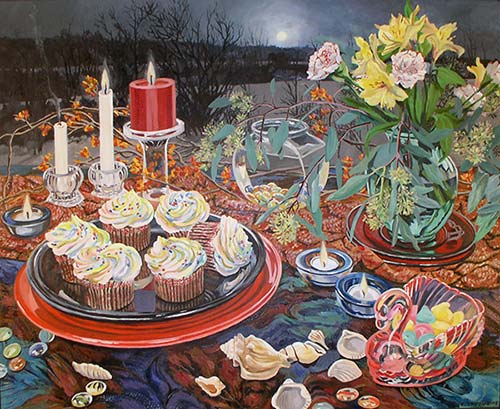 Full Moon, oil on canvas
Full Moon, oil on canvas
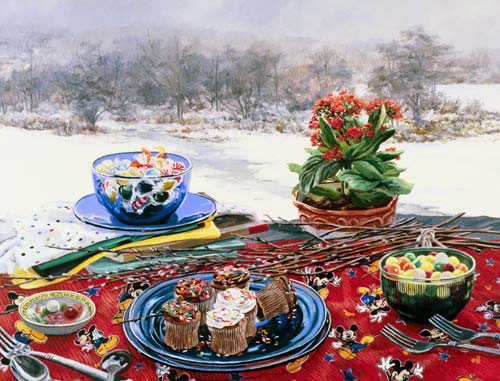 Cakes, Candies, Snow
Cakes, Candies, Snow
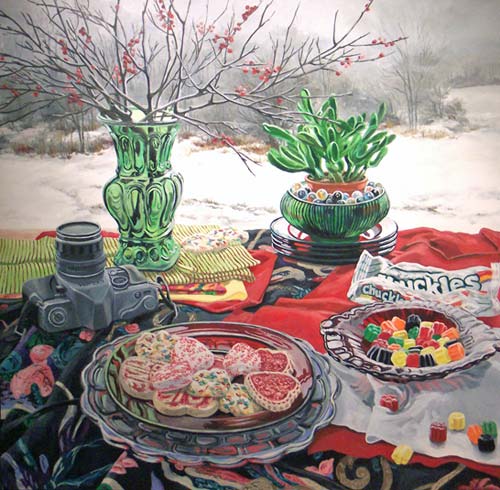 Cookies and Chuckles
Cookies and Chuckles
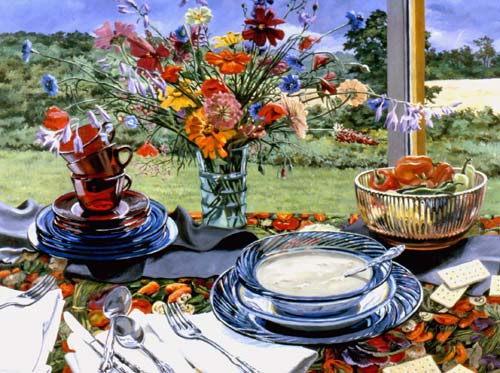 Blue Plate special
Blue Plate special
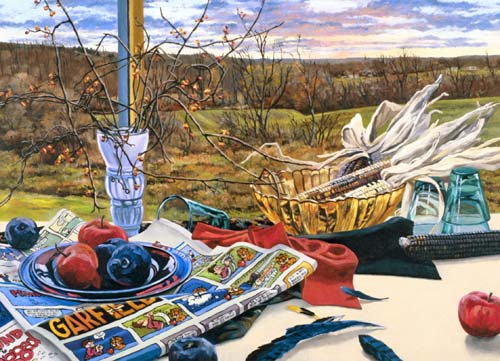 November Sunset
November Sunset
Prices available on request